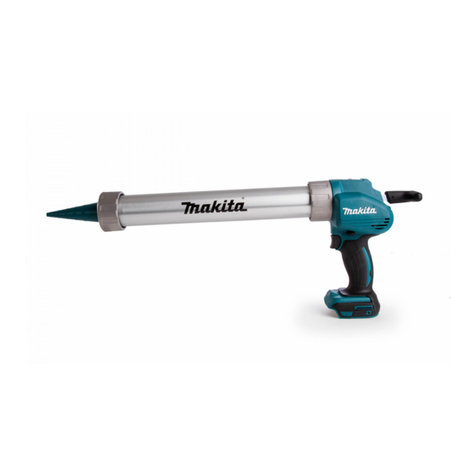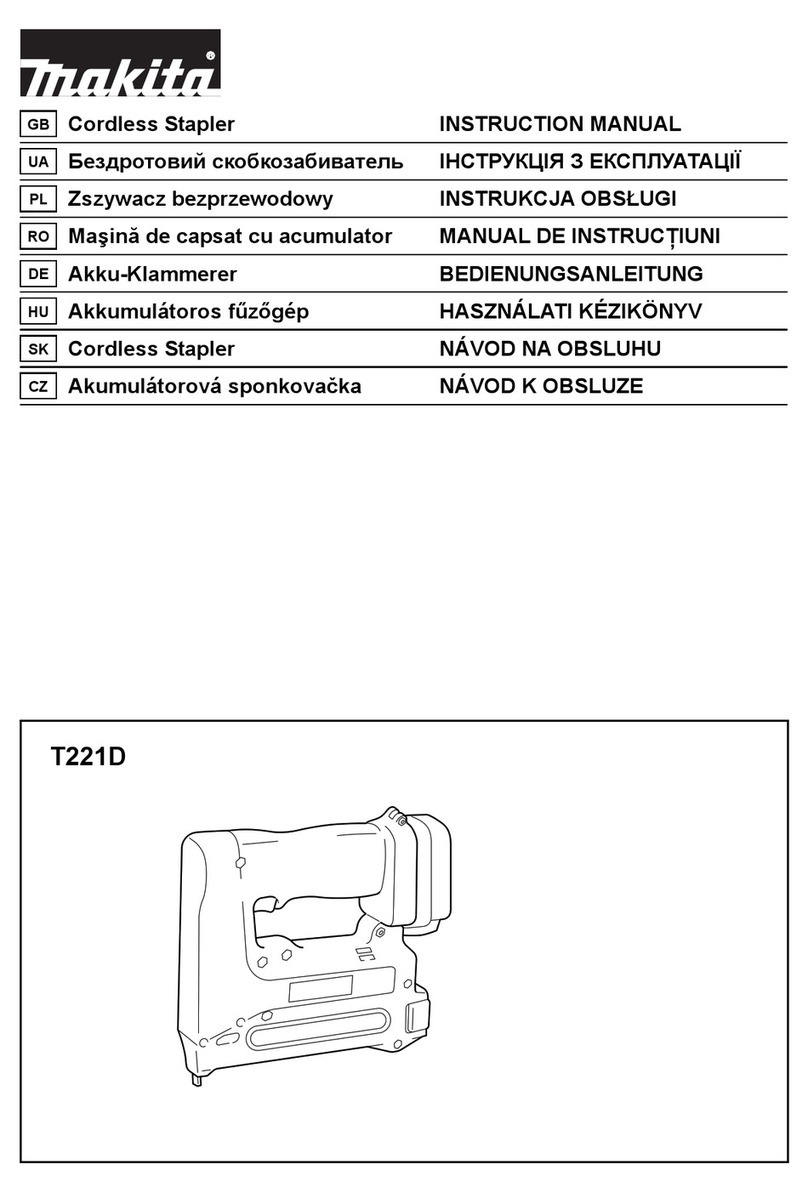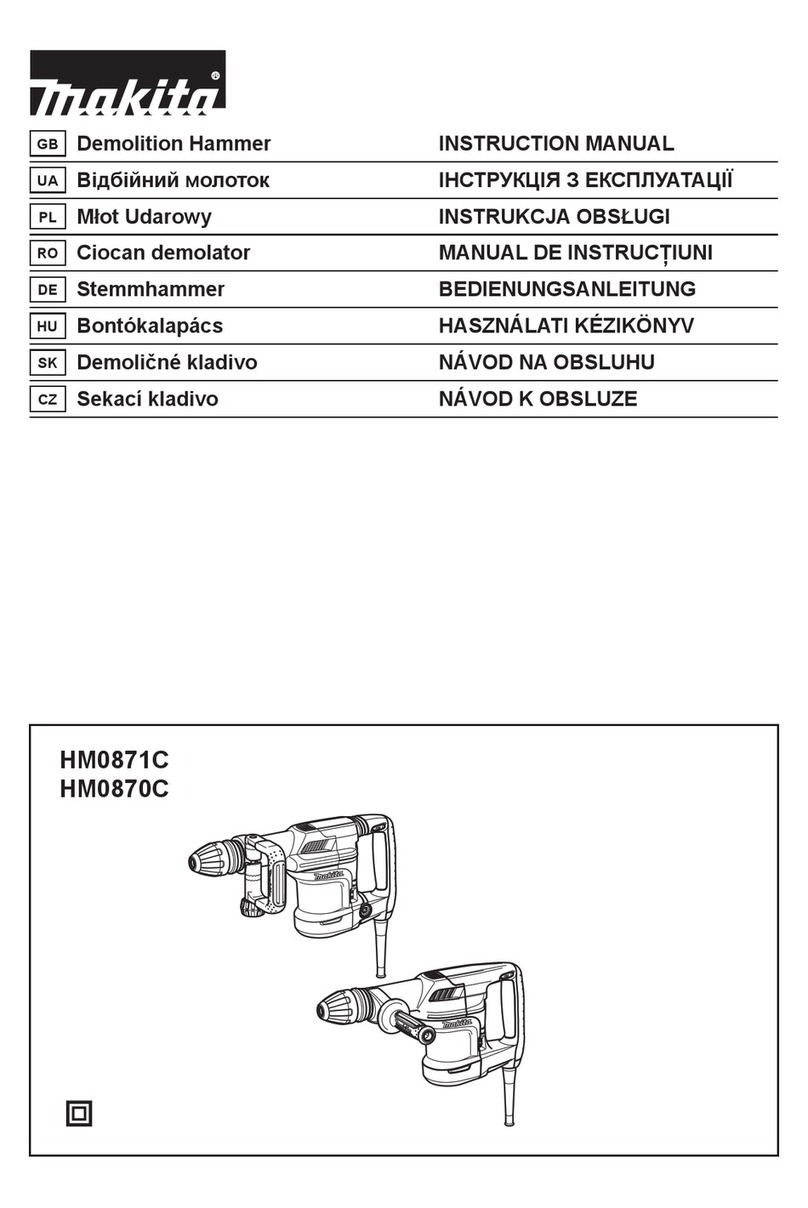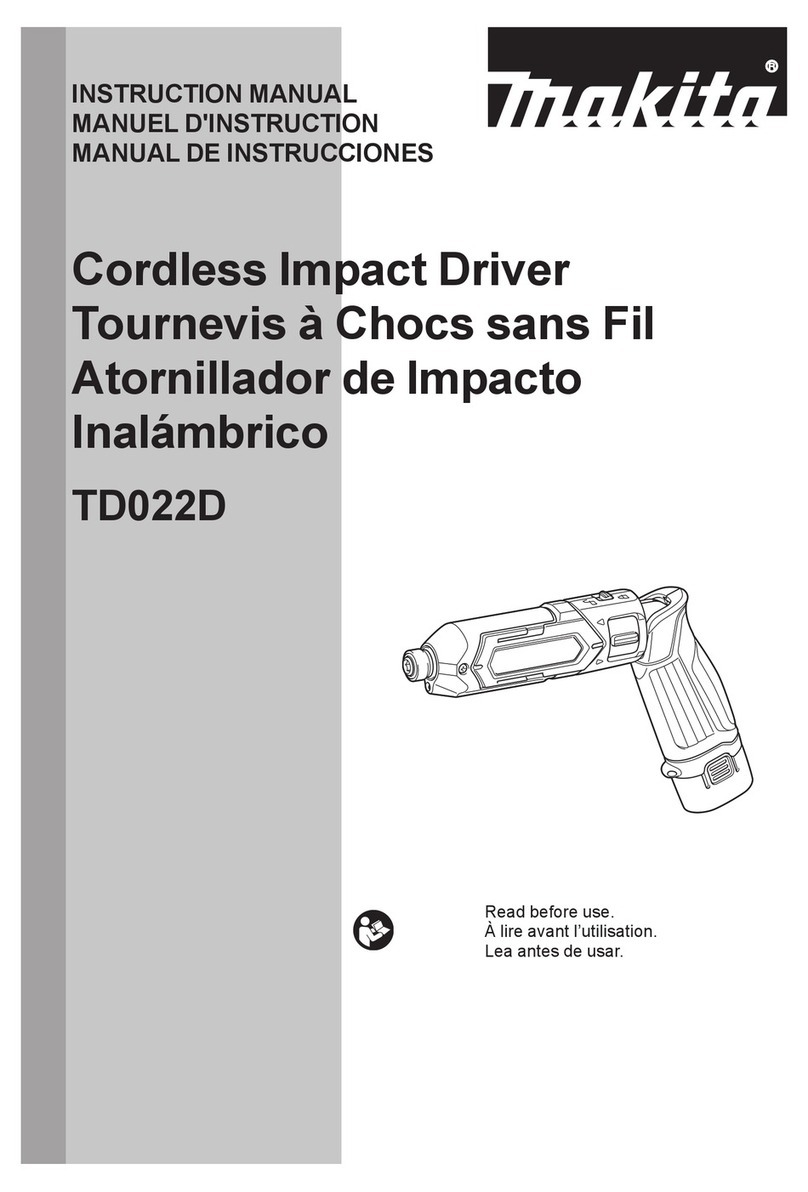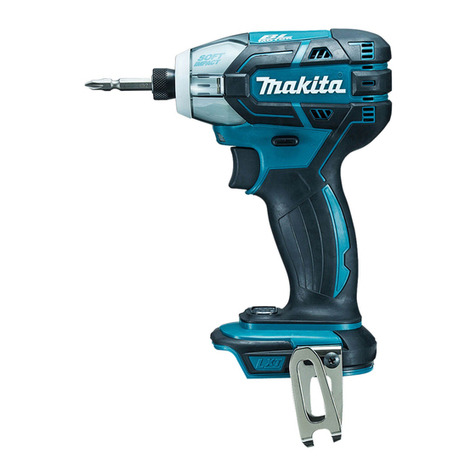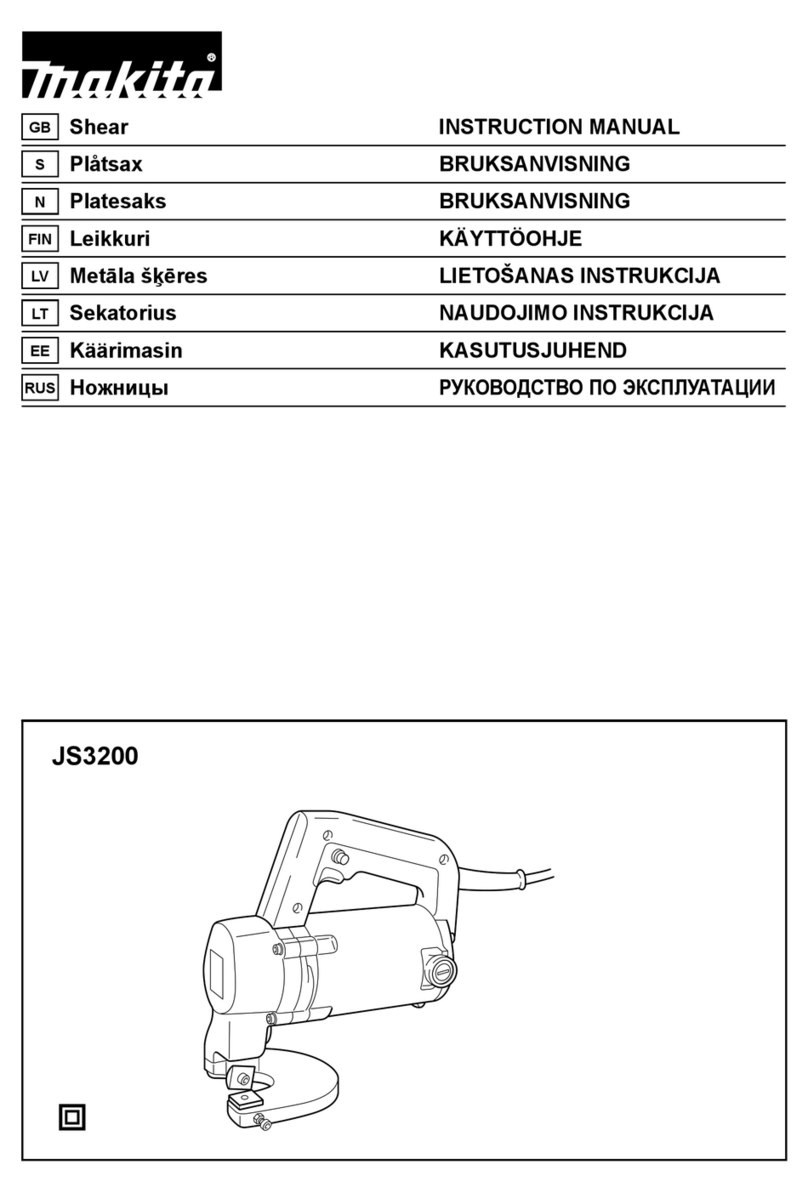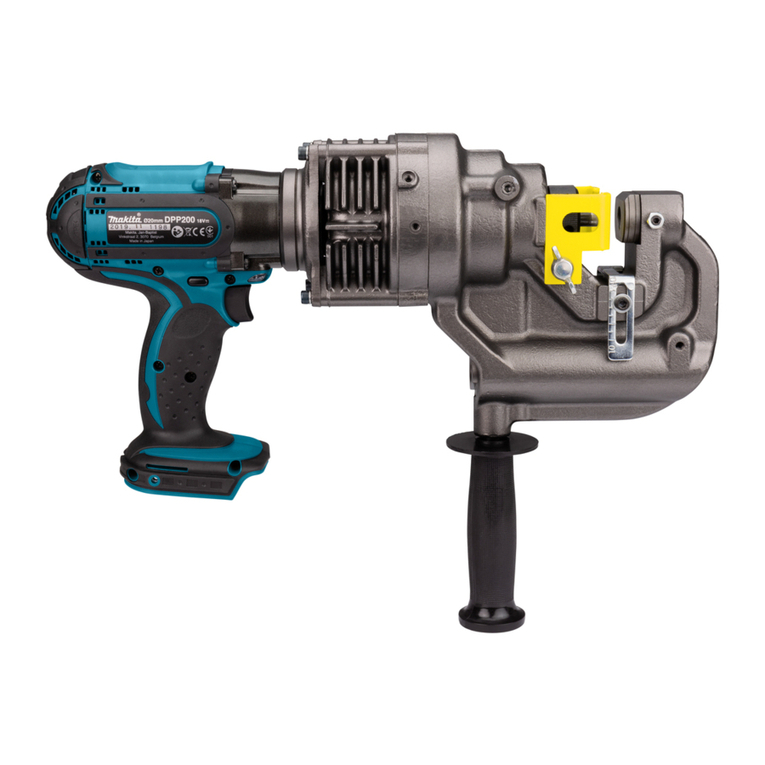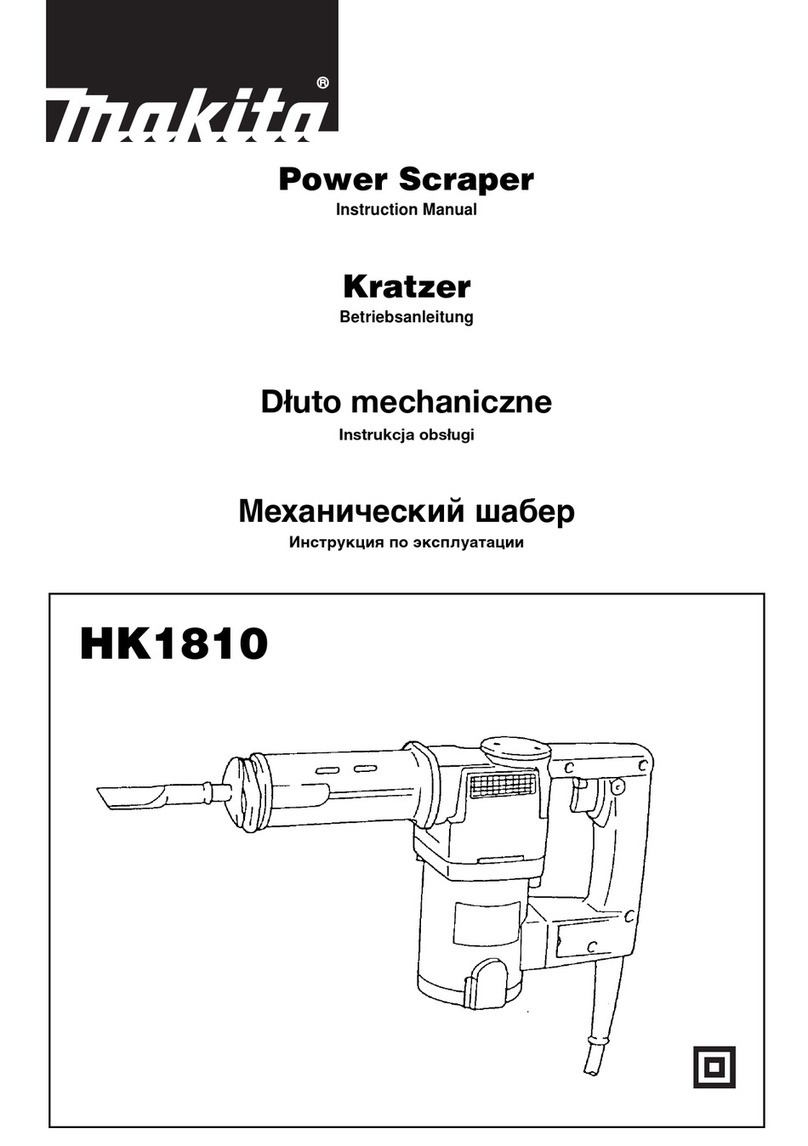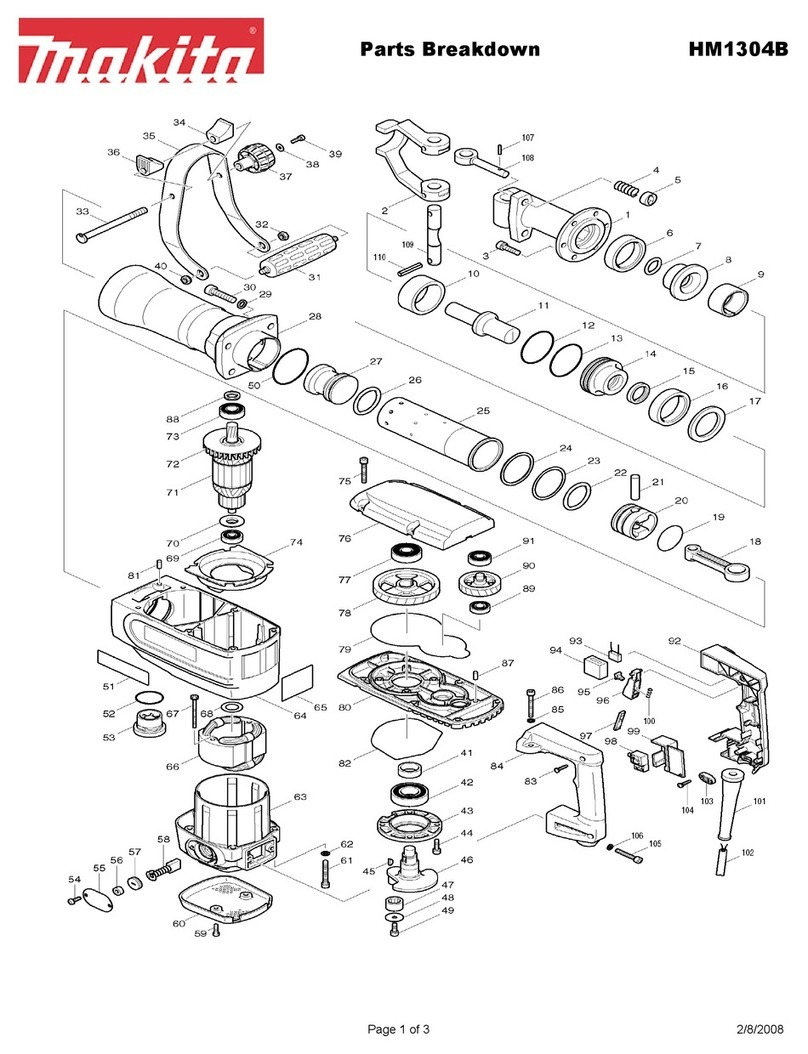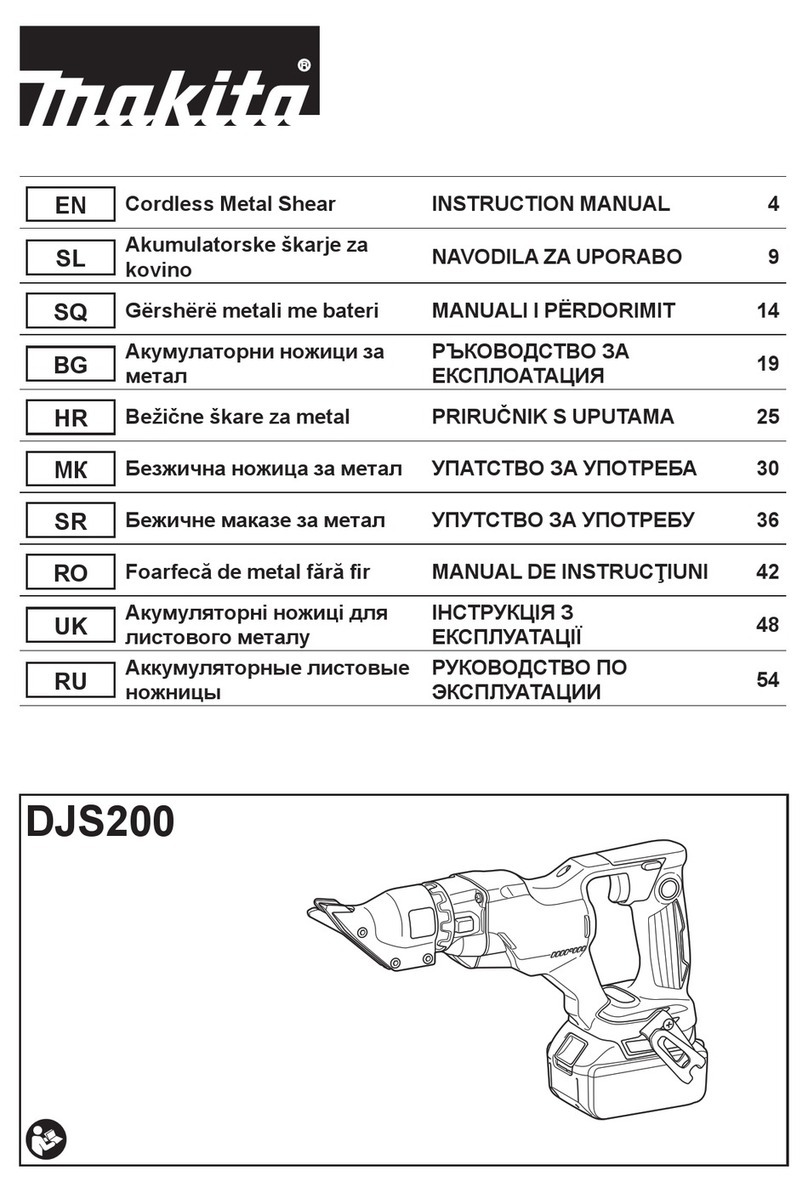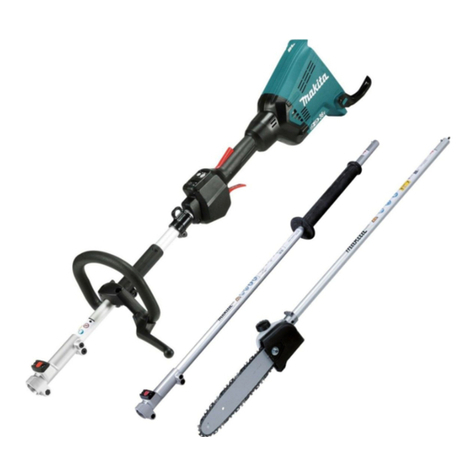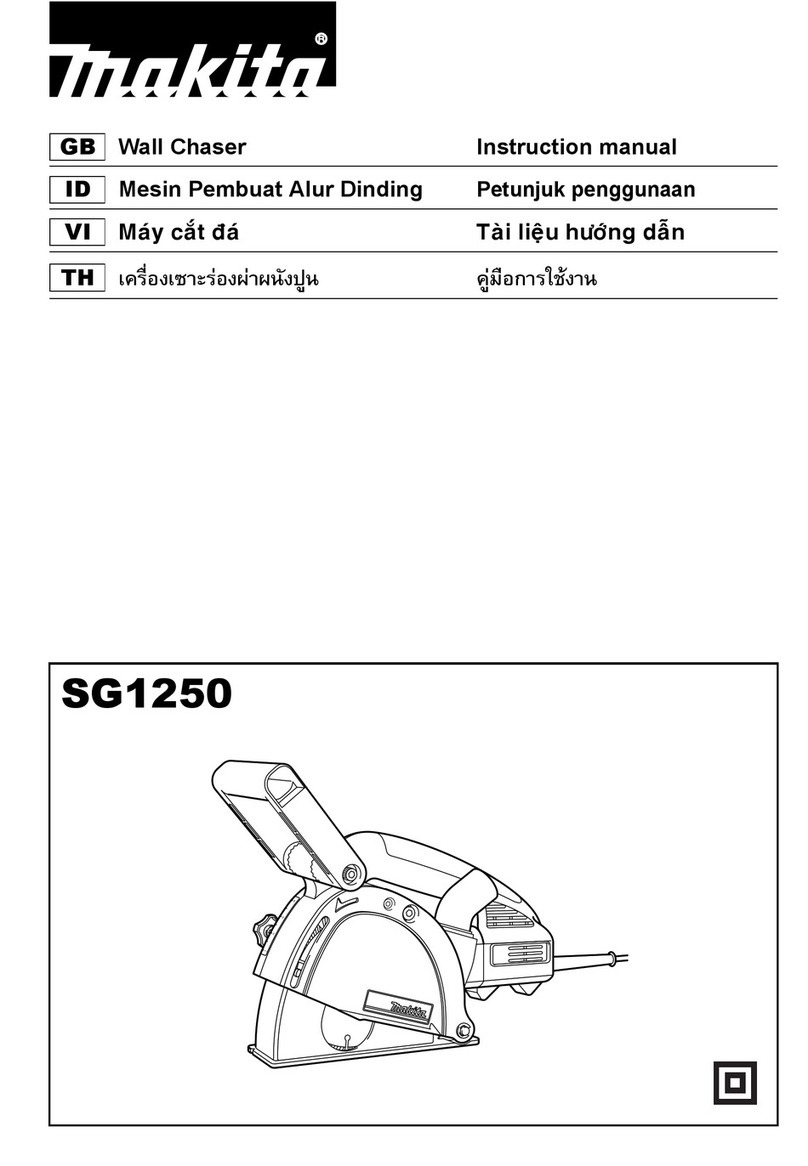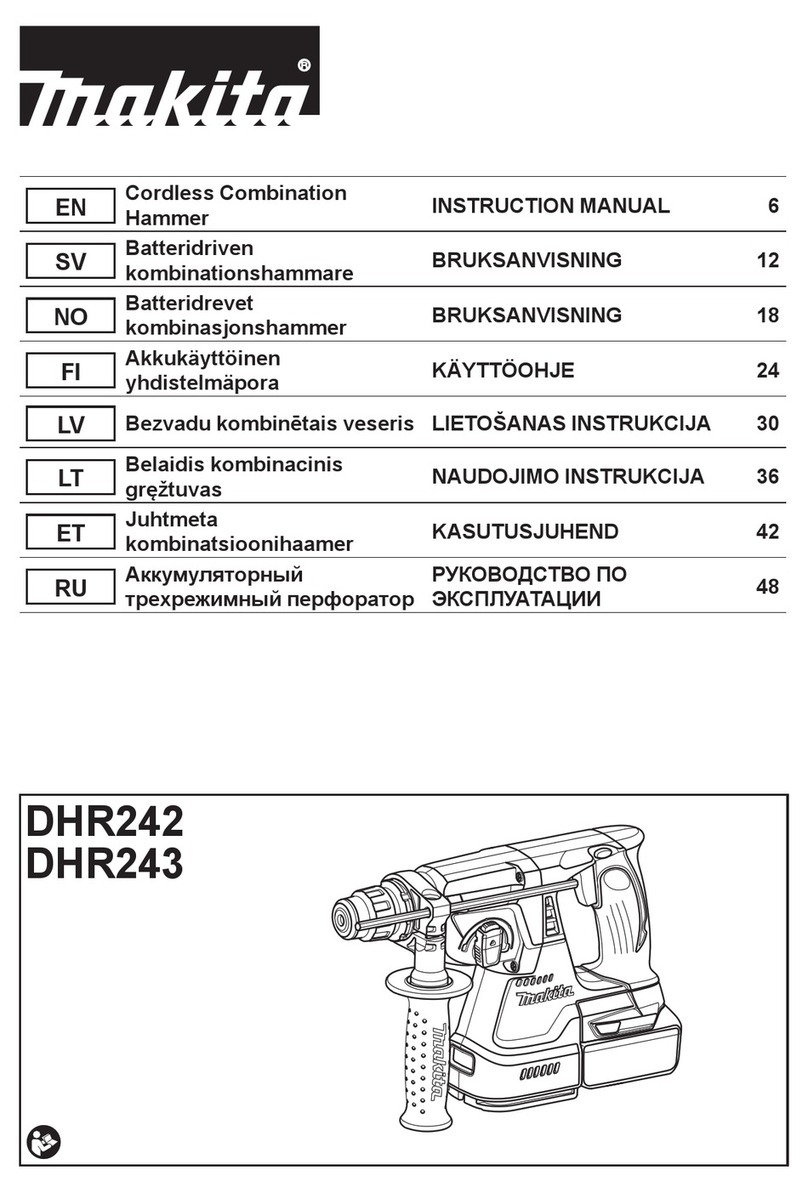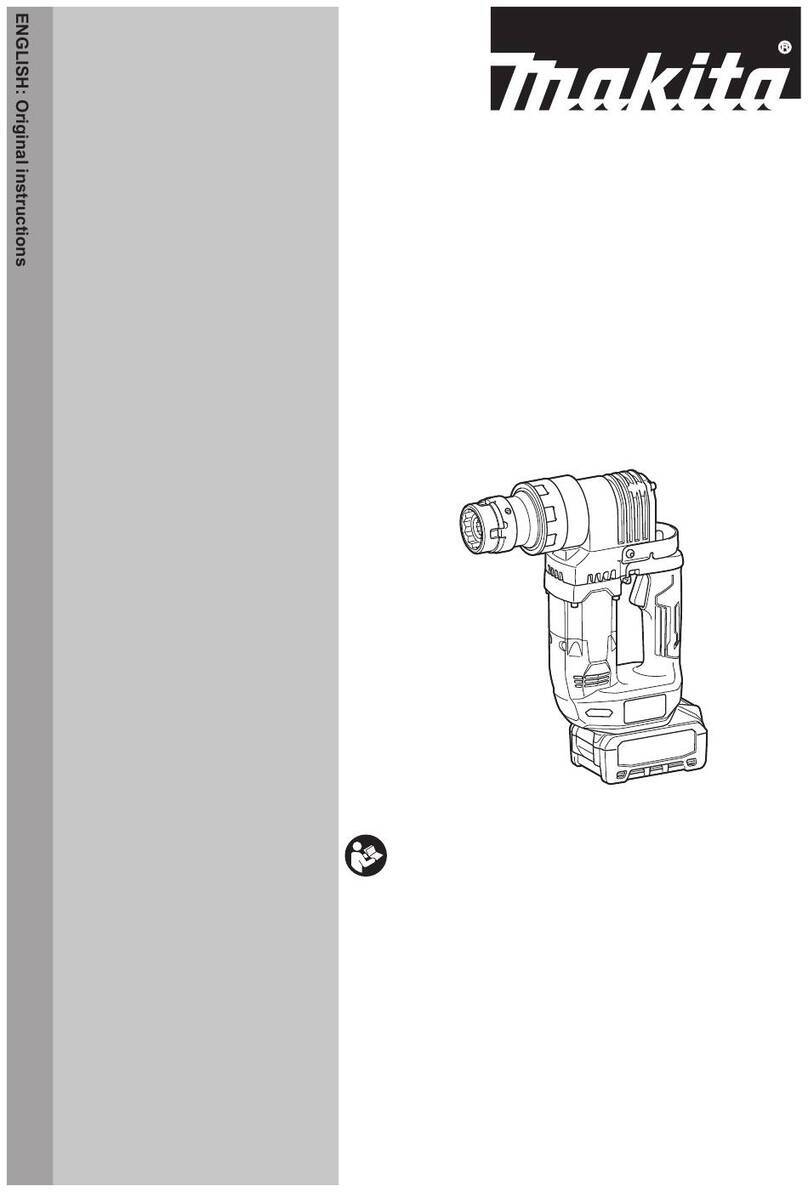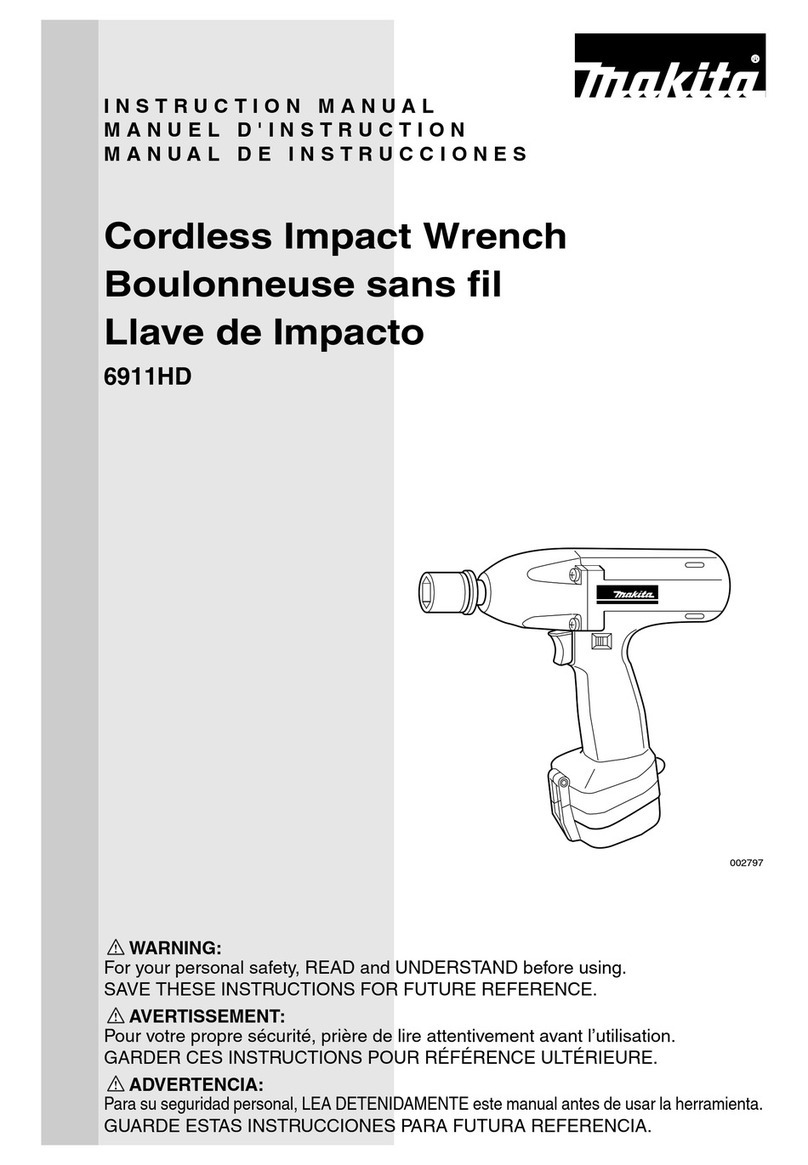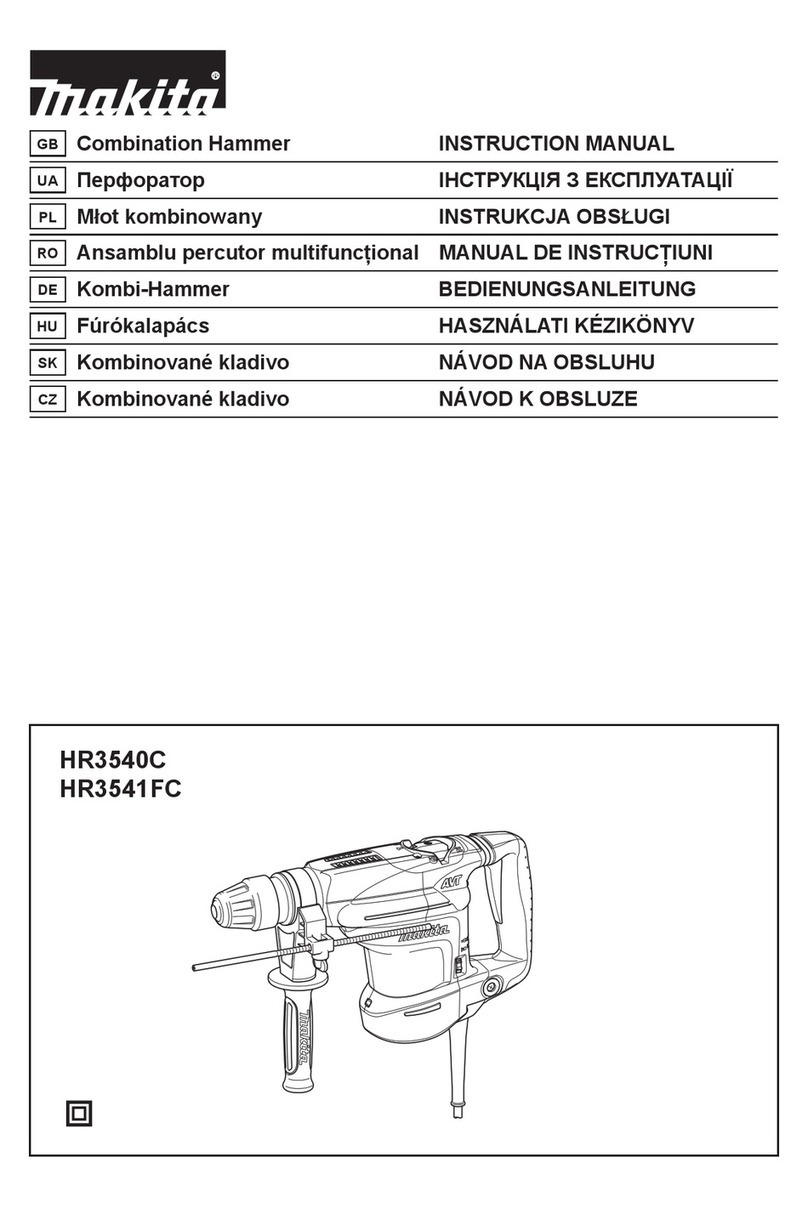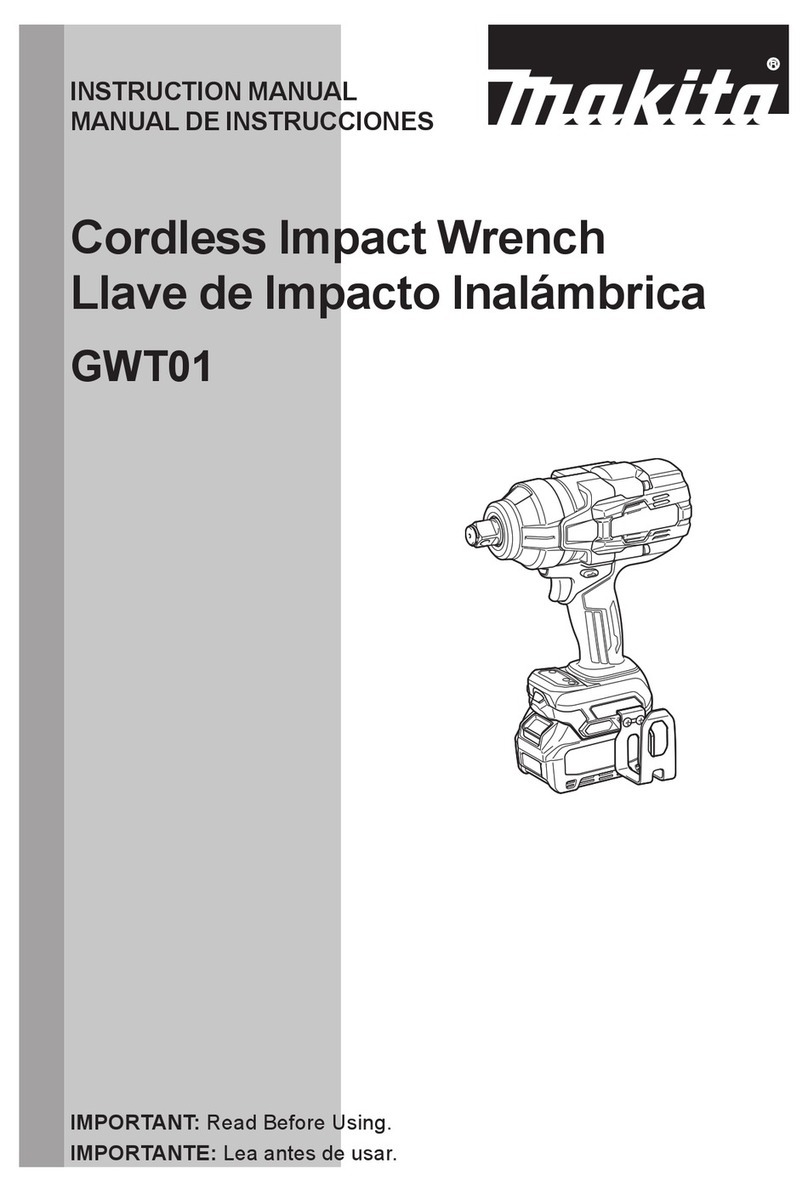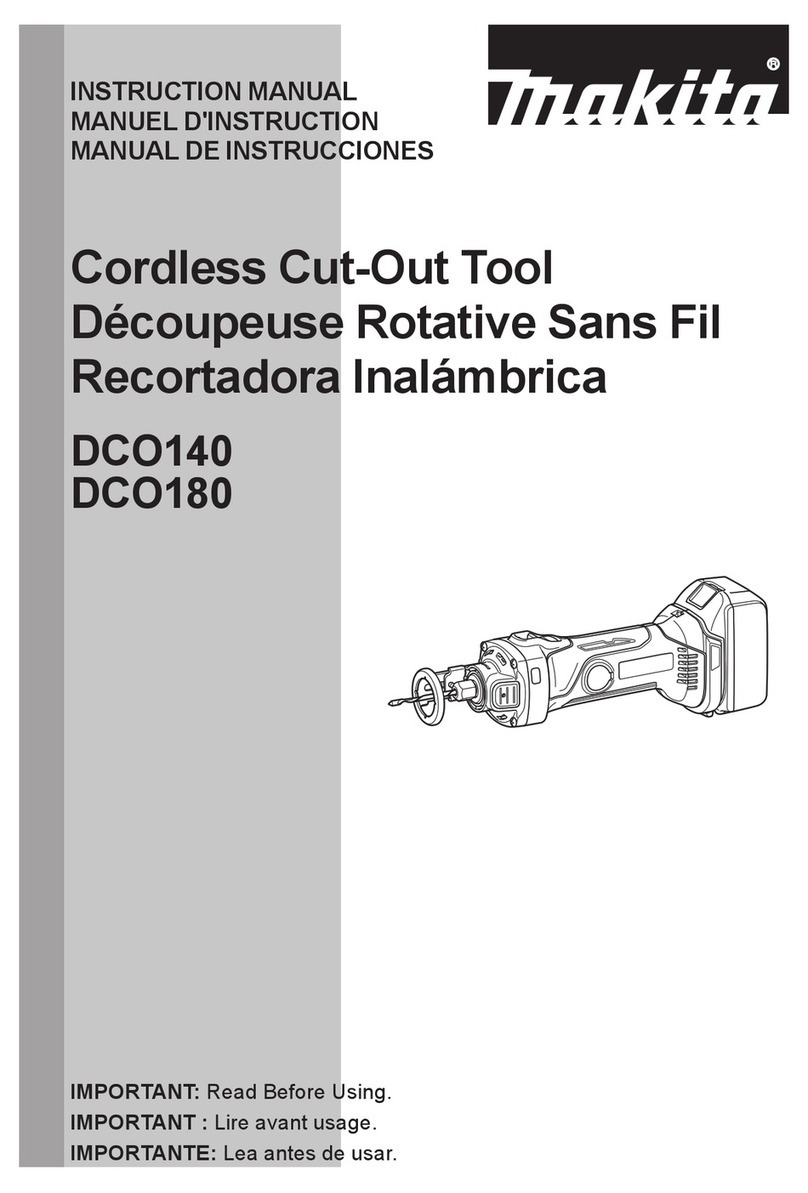
6
power tool "live" and could give the operator an
electric shock.
3. Use clamps or another practical way to secure
and support the workpiece to a stable platform.
Holding the work by hand or against your body
leaves it unstable and may lead to loss of control.
4. Always use safety glasses or goggles.
Ordinary eye or sun glasses are NOT safety
glasses.
5. Avoid cutting nails. Inspect workpiece for any
nails and remove them before operation.
6. Hold the tool firmly.
7. Make sure the application tool is not
contacting the workpiece before the switch is
turned on.
8. Keep hands away from moving parts.
9. Do not leave the tool running. Operate the tool
only when hand-held.
10. Always switch off and wait for the blade to
come to a complete stop before removing the
blade from the workpiece.
11. Do not touch the application tool or the
workpiece immediately after operation; they
may be extremely hot and could burn your
skin.
12. Do not operate the tool at no-load
unnecessarily.
13. Always use the correct dust mask/respirator
for the material and application you are
working with.
14. Some material contains chemicals which may
be toxic. Take caution to prevent dust
inhalation and skin contact. Follow material
supplier safety data.
15. This tool has not been waterproofed, so do not
use water on the workpiece surface.
16. Ventilate your work area adequately when you
perform sanding operations.
17. Use of this tool to sand some products, paints
and wood could expose user to dust
containing hazardous substances. Use
appropriate respiratory protection.
18. Be sure that there are no cracks or breakage
on the pad before use. Cracks or breakage
may cause a personal injury.
19. Do not use accessories which are not
specifically designed and recommended by
the tool manufacturer. Just because the
accessory can be attached to your power tool, it
does not assure safe operation.
20. Wear personal protective equipment.
Depending on application, use face shield,
safety goggles or safety glasses. As
appropriate, wear hearing protectors, gloves
and workshop apron capable of stopping
small abrasive or workpiece fragments. The
eye protection must be capable of stopping flying
debris generated by various operations . The dust
mask or respirator must be capable of filtrating
particles generated by your operation. Prolonged
exposure to high intensity noise may cause
hearing loss.
21. Keep bystanders a safe distance away from
work area. Anyone entering the work area
must wear personal protective equipment.
Fragments of workpiece or of a broken accessory
may fly away and cause injury beyond immediate
area of operation.
22. Never lay the power tool down until the
accessory has come to a complete stop. The
spinning accessory may grab the surface and pull
the power tool out of your control.
23. Do not run the power tool while carrying it at
your side. Accidental contact with the accessory
could snag your clothing, pulling the accessory
into your body.
24. Do not operate the power tool near flammable
materials. Sparks could ignite these materials.
25. Do not use accessories that require liquid
coolants. Using water or other liquid coolants may
result in electrocution or shock.
26. Always be sure that the tool is switched off
and unplugged or that the battery cartridge is
removed before carrying out any work on the
tool.
27. Always be sure you have a firm footing. Be
sure no one is below when using the tool in
high locations.
SAVE THESE INSTRUCTIONS.
WARNING:
DO NOT let comfort or familiarity with product
(gained from repeated use) replace strict adherence
to safety rules for the subject product. MISUSE or
failure to follow the safety rules stated in this
instruction manual may cause serious personal
injury.
ENC007-7
IMPORTANT SAFETY
INSTRUCTIONS
FOR BATTERY CARTRIDGE
1. Before using battery cartridge, read all
instructions and cautionary markings on (1)
battery charger, (2) battery, and (3) product
using battery.
2. Do not disassemble battery cartridge.
3. If operating time has become excessively
shorter, stop operating immediately. It may
result in a risk of overheating, possible burns
and even an explosion.
4. If electrolyte gets into your eyes, rinse them
out with clear water and seek medical
